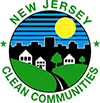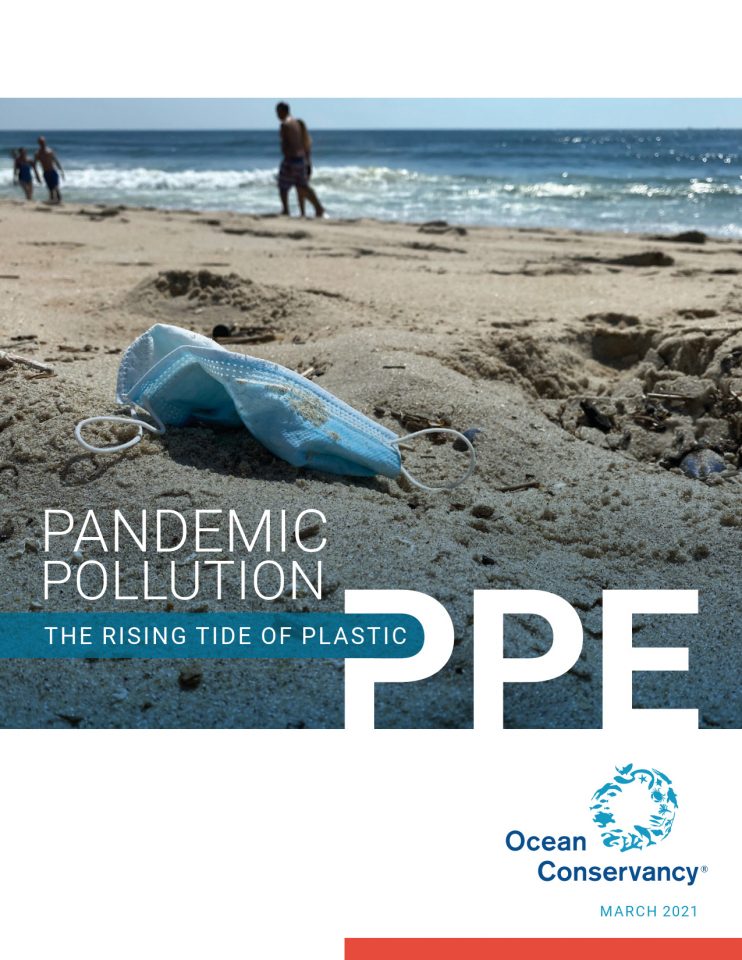Coordinator Content
Reports, Studies, Articles, Webinars and PowerPoint Presentations for Clean Communities Coordinators
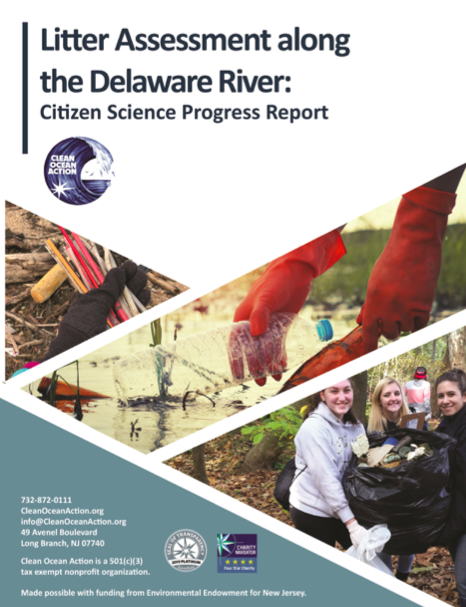 Litter Assessment along the Delware River: Citizen Science Progress Report, (10 pages, September 2020)
Litter Assessment along the Delware River: Citizen Science Progress Report, (10 pages, September 2020)
by Clean Ocean Action (COA)
In 2015, Clean Ocean Action (COA) launched the Reduce Litter in the Delaware River project, the goal of which “is to monitor litter and reduce the land-based sources of trash that continue to contribute to pollution along and in the river, and that ultimately flow into the ocean. This report summarizes the results of the initial phases of the project which identified hot spot areas and assessed accumulation.“Marine debris most often starts on land as litter, transportation spillage, or wrongful management, and is either windblown or carried by stormwater into waterways. As nearly all waterways ultimately flow into the sea, most marine debris is picked up by currents and accumulates in massive regions of the ocean called gyres. However, before it gets there, some trash also washes up on along riverbanks, shorelines and beaches. While this creates unsightly beaches and threats to wildlife it also provides a small window of time for citizens to remove this harmful pollution from the marine ecosystem before it goes out to sea. It also allows data to be collected to help track down and eliminate sources as well as providing evidence for stronger policies. In New Jersey, the shoreline of the Delaware River is no exception.”
Watch the webinar presentation about the report (51 minutes, December 21, 2021)
Webinar Series: Accelerating the Progress to Litter-Free Communities, from Keep America Beautiful (KAB)
This three-part series covers:
- Litter in America: Facts and Trends (1hr 1:46 minutes, June 23, 2021)
- Ending Litter: Policies and Practices (58:19 minutes, July 14, 2021)
- Litter-Free Communities: Building Community (1hr 26 seconds, August 18, 2021)
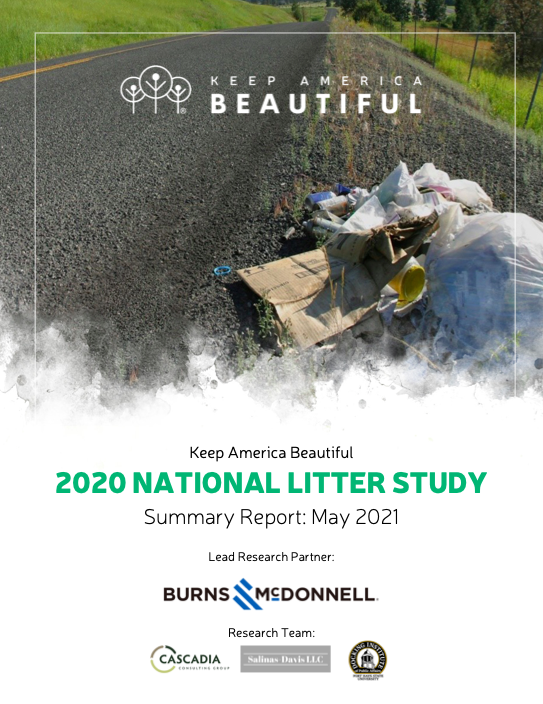
2020 National Litter Study, Summary Report, by Keep America Beautiful (KAB)
The study “comprises four major components:
- a survey examining public attitudes about litter,
- a visible litter survey that provides an estimate of the litter on the ground across the United States,
- behavioral observations that shed light on littering behavior in public, and
- a survey that estimates the public costs of litter in the United States.
In a major expansion of the scope of litter research, the Study provides the first scientific national estimate of the litter along U.S. waterways. Furthermore, the Study provides the country’s only estimate of how much personal protective equipment (PPE) was littered at the time of the Study during the COVID-19 pandemic. Together, the components of the Study provide a comprehensive view of litter in the United States today.” – kab.org (44 pages, May 2021)
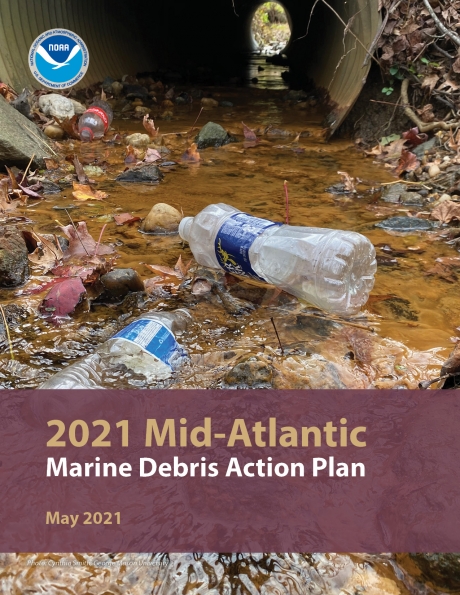 2021 Mid-Atlantic Marine Debris Action Plan, (42 pages, May 2021) by NOAA’s Marine Debris Program
2021 Mid-Atlantic Marine Debris Action Plan, (42 pages, May 2021) by NOAA’s Marine Debris Program
The plan “was created by a voluntary, collaborative effort of 96 organizations in Delaware, Maryland, New Jersey, New York, Virginia, and the District of Columbia. The Action Plan encompasses work that will be undertaken in the next five years (2021-2026) and establishes a comprehensive framework for strategic action to help reduce the impacts of marine debris on the Mid-Atlantic and its coasts, people, and wildlife.”
Of the 4 goals in this plan and Goal #1 is: Understand, Prevent, Mitigate the Impacts of Consumer Debris.
Pandemic Pollution, The Rising Tide of Plastic PPE, by Ocean Conservancy
“The COVID-19 pandemic has dramatically increased the use of certain types of plastic products. This includes personal protective equipment (PPE) but also single-use plastic bags, food and beverage containers and other single-use plastics that can harm our communities and the ocean and present waste management challenges.
This report is intended to shed light on the growing presence of PPE pollution burdening the environment since the start of the pandemic. It also includes recommendations for how all of us can help prevent plastics from entering the environment in the first place while ensuring PPE and other plastics are responsibly managed. As we protect our communities and each other in the face of this invisible threat we can all do more to protect our communities and our ocean from the impacts of the pandemic.” – oceanconservancy.org (16 pages, March 2021)
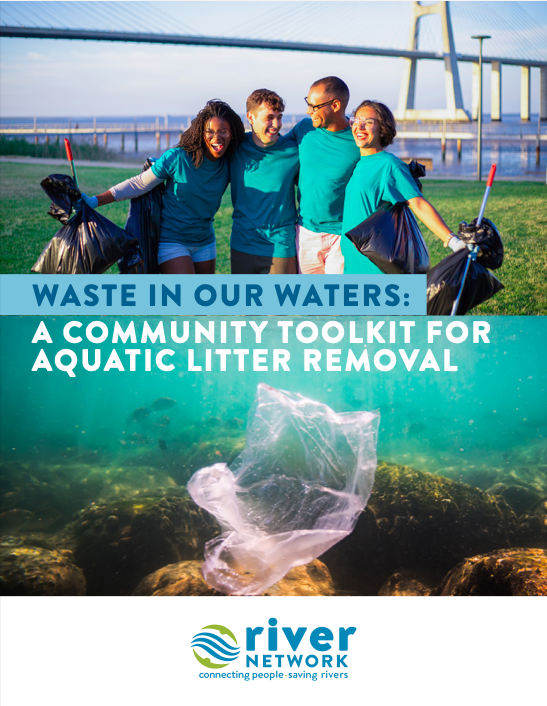 Waste in Our Waters: A Community Toolkit for Aquatic Litter Removal, (25 pages, ~2020) by River Network based in Boulder, CO with offices in several states
Waste in Our Waters: A Community Toolkit for Aquatic Litter Removal, (25 pages, ~2020) by River Network based in Boulder, CO with offices in several states
This toolkit “is a step-by-step guide for addressing litter in your community, both before and after it reaches your local waterway.” It includes “a variety of strategies, activities, and specific devices to help address aquatic litter in your community. Whether you’re a community organization, concerned citizen, or local decision-maker, Waste in Our Waters will walk you through assessing your community’s aquatic litter issues, planning a cleanup effort, choosing a litter capture device, responsibly disposing of the waste you collect, and more.
Here is an accompanying video for the toolkit:
Using “Waste in Our Waters: A Community Toolkit for Aquatic Litter Removal”
(9:01 minutes, Sep 2, 2020)
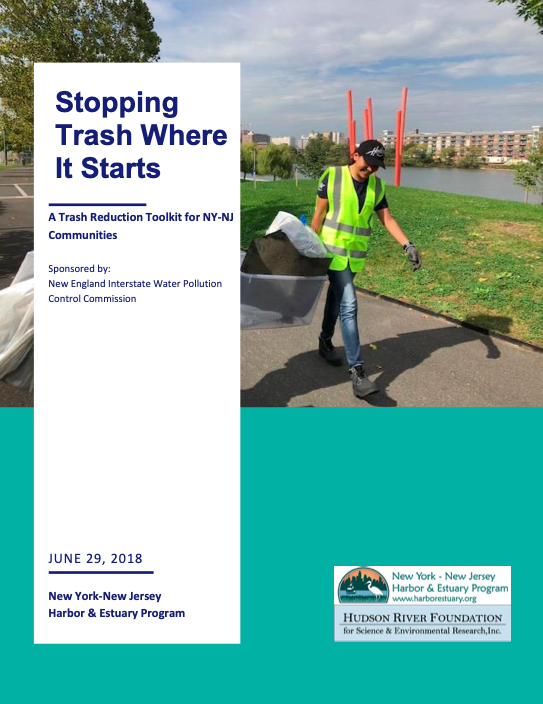 Stopping Trash Where it Starts, A Trash Reduction Toolkit for NY-NJ Communities, by New York-New Jersey Harbor & Estuary Program and sponsored by New England Interstate Water Pollution Control Commission (NEIWPCC) (posted on hudsonriver.org)
Stopping Trash Where it Starts, A Trash Reduction Toolkit for NY-NJ Communities, by New York-New Jersey Harbor & Estuary Program and sponsored by New England Interstate Water Pollution Control Commission (NEIWPCC) (posted on hudsonriver.org)
“New York and New Jersey has[sic] taken measures to address marine debris…. Both states capture and remove marine debris through floating barriers, skimmer vessels, netting or screening facilities, as well as source control programs such as street sweeping and stewardship programs (i.e., adopt-a-catch-basin, adopt-a-beach or clean streets-clean beaches). These efforts solely address the issue of trash once it becomes marine debris.”
“…New York and New Jersey will need to consider pollution prevention options that address trash at its source before it becomes marine debris. In 2016, Columbia University conducted a litter survey in New York City. In 2017, HEP and Montclair State University’s Passaic River Institute (PRI) conducted a litter survey in several municipalities in New Jersey along the Passaic River. Both studies concluded that single-use plastics and food-related wrapping items are the most prevalent materials found in the streets. Based on this data, educational campaigns focused on reducing the use of single-use, disposable plastics in the harbor are recommended. To help municipalities and community organizations move forward, this toolkit provides an overview of the various communication and policy campaigns being undertaken around the region nationally. For communities interested in conducting their own litter survey, the final section provides detailed instructions….” – Executive Summary Toolkit (30 pages, June 29, 2018)
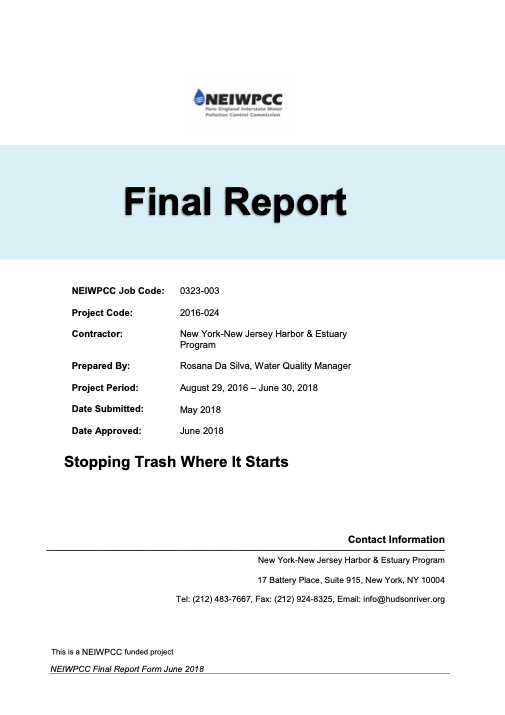
Stopping Trash Where it Starts – Final Report, funded by NEIWPCC and USEPA (posted on hudsonriver.org here)
“The New York-New Jersey Harbor & Estuary Program (HEP) and Montclair State University’s Passaic River Institute (PRI) proposed to collect data from 35 locations in New Jersey on the types, sources, and conditions leading to litter generation and dispersal in order to target reduction strategies in the Passaic River Watershed. The objectives of this project include characterizing and identifying trash focusing on floatables entering local waterways and local conditions contributing to trash dispersal in order to target specific actions for reducing trash at the source.” – Executive Summary Final Report (24 pages, June 2018) (project period August 2016 – June 2018)
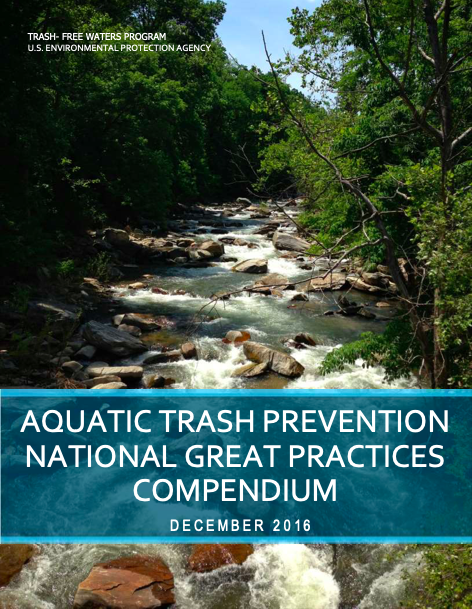 Aquatic Trash Prevention National Great Practices Compendium , by USEPA (US Environmental Protection Agency) Trash Free Waters Program
Aquatic Trash Prevention National Great Practices Compendium , by USEPA (US Environmental Protection Agency) Trash Free Waters Program
“The National Great Practice Compendium highlights outstanding activities, technologies, and programs that prevent trash from entering the aquatic environment and/or reduce the overall volume of trash that is generated. An activity qualifies as a Great Practice if it achieves measurable progress towards its trash prevention and/or reduction goals and shows a clear return on investment from such efforts. Results must be measurable and achievable. This compendium serves as a reference tool for Great Practices that show real results. The Trash Free Waters program developed this resource after hearing from many stakeholders that they needed better information on “what works.” The Great Practices that are highlighted can help civic leaders and others make informed decisions about their future trash prevention program investments based upon the successes of others.” – epa.gov (43 pages, December 2016)
